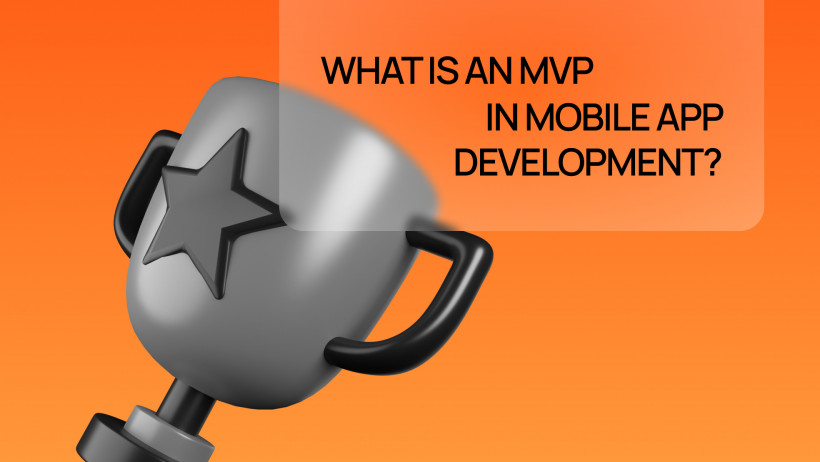If you’re dreaming about building a mobile app in 2025, here’s a truth you can’t ignore: building everything at once is risky. You can spend months (or years) and a large budget creating the “perfect” product, only to realize your users wanted something different.
That’s why smart founders ask early on: what is an MVP? The answer could save your startup from wasted time and resources. By launching with a minimum viable product (MVP), you strip your idea down to the essentials, test it with real users, and learn what truly matters before scaling up.
In this guide, we’ll break down what an MVP really means in mobile app development, why it’s more important than ever in 2025, and how you can build one to maximize impact and minimize risk.
MVP Explained: The Core Concept
What does MVP mean in software development?
An MVP, or minimum viable product, is the first functional version of your app that focuses on solving one main problem and delivering clear value to early adopters. Unlike a demo or prototype, it’s a real, usable product that can be released to the market.
The purpose isn’t to impress with fancy features, it’s to test your core idea under real-world conditions. By starting with an MVP, you give yourself the chance to see how users react, what they like, and what they don’t. That way, you can adapt quickly instead of investing months (and a big budget) in something users might ignore.
Think of it as the “skeleton” of your app: strong enough to stand and move, but not yet built for a marathon. Over time, as you add features and polish the design, that skeleton develops into a fully functional body — fit, flexible, and ready to scale.
Another way to imagine it: if your final product is a gourmet three-course meal, your MVP is a simple but satisfying sandwich. It may not look as impressive, but it feeds the customer’s hunger and gives you instant feedback: do they like the taste enough to come back for more?
The lean startup connection
The MVP concept is deeply tied to the lean startup methodology, a framework that encourages founders to:
- Build quickly: don’t wait a year to release your product — ship a smaller version as soon as possible.
- Measure effectively: gather data on user behavior, not just opinions.
- Learn and adapt: use feedback loops to refine features and validate assumptions.
Instead of gambling on what you think the market wants, an MVP helps you validate product-market fit step by step. It reduces uncertainty, encourages smarter investments, and creates a foundation for sustainable growth.
Why MVPs Are Essential in 2025

The tech world moves fast. In 2025, user expectations are higher, competition is fierce, and budgets are tighter. Here’s why focusing on MVP in mobile app development matters more than ever:
- Budget-conscious development: build only what’s necessary first, then reinvest based on traction.
- Faster market entry: get your app in users’ hands months earlier, while competitors are still stuck in development.
- Real-world validation: avoid assumptions — let actual user behavior shape your product roadmap.
In short, MVP development 2025 reduces the guesswork, making your app launch strategy more strategic and cost-effective.
Key Features of a Mobile MVP
When building an MVP for startup apps, keep it simple, but strategic. Your product doesn’t need to be perfect; it needs to be functional and testable.
- One core functionality: focus on solving a single, pressing problem.
- Clean UX, not perfect UX: the design should be intuitive, even if it’s not fully polished.
- Scalability in mind: build with a tech stack that allows growth when you scale.
Minimum viable product example: Instagram’s original MVP only allowed users to post photos with simple filters. No stories, reels, or DMs — just the core feature that hooked users.
Steps to Build a Successful App MVP

Here’s a proven path to creating an MVP that actually works:
- Define problem and audience
Who is your app for? What problem does it solve? Be laser-focused. - Identify must-have features
Differentiate between “must-have” and “nice-to-have.” An MVP scope definition is about ruthless prioritization. - Choose tech stack wisely
Pick tools and frameworks that support rapid prototyping and future scalability. - Develop and test iteratively
Release, gather feedback, adjust, repeat. Create user feedback loops that guide each new update.
MVP vs Prototype vs POC
Many founders confuse these terms. Here’s how they differ:
- Prototype: A visual or clickable mockup. Great for pitching or testing UX ideas.
- POC (Proof of Concept): A small technical test to prove that something can be built.
- MVP: A working product with core functionality, tested by real users in the market.
When to use each:
- Prototype: Early brainstorming and design validation.
- POC: Testing technical feasibility.
- MVP: Testing real user demand and market fit.
Common Mistakes to Avoid

Even with the best intentions, many startups stumble when building their first MVP. The good news? Most of these pitfalls are preventable once you know what to look out for. Here are the most common mistakes to avoid:
Building too much
The biggest trap is trying to launch with all the features at once. Adding every idea from day one defeats the very purpose of an MVP. Instead of clarity, you get complexity and a bloated product that takes too long (and too much money) to release.
Example: A food delivery startup that insists on adding live tracking, AI-powered recommendations, and loyalty programs before launch will likely run out of budget before it gets a single order.
Ignoring early user data
Early adopters are your best teachers. Their feedback shows you what works and what doesn’t. Ignoring this data — or worse, assuming you “already know better” — means you risk building in the dark.
| Tip: Set up clear user feedback loops from day one (surveys, analytics, in-app prompts) and actually act on what you learn. |
Treating MVP like a final version
An MVP is a starting point. If you expect users to treat your MVP like a polished, full product, you’ll be disappointed. The goal isn’t perfection, it’s validation.
Think of your MVP as a rough sketch, not the framed painting. You’ll refine it over time, based on real insights.
Avoiding these mistakes helps you stay lean, learn faster, and keep your focus where it matters: solving your users’ core problem first.
How to Measure MVP Success
You can’t improve what you don’t measure. Track these MVP metrics to know if you’re moving in the right direction:
- Retention and engagement: Are users coming back after the first try?
- Conversion to paying users: Do free users see enough value to pay?
- Feedback cycles: Are you learning and iterating fast enough?
How WEZOM Builds MVPs for Mobile Startups
At WEZOM, we know that turning a bold idea into a working app can feel overwhelming. That’s why we guide startups through an MVP-first approach designed to reduce risks and maximize learning:
- Discovery phase
We start by working closely with you to define the MVP scope, understand your target audience, and prioritize must-have features. This step ensures that we’re building something your users actually need, not just what looks good on paper. - Agile execution
Our team develops in short, focused sprints, which allows for rapid prototyping and constant adjustments. This flexibility means your app evolves in real time — adapting quickly to new insights or market changes. - Data-backed iteration
Every decision is guided by user behavior and real-world metrics. Instead of guessing, we rely on feedback loops to refine features, improve UX, and keep your app aligned with user expectations.
This process has already helped dozens of startups launch faster, validate their ideas in real markets, and scale without overspending. Whether you’re at the concept stage or ready to refine an existing app, WEZOM’s approach ensures you’re building something lean, cost-effective, and loved by users.

Conclusion
In 2025, the smartest way to launch an app isn’t about building a feature-packed product from day one. It’s about choosing a path that’s lighter, faster, and more flexible: start small, learn fast, and grow with your users.
An MVP is more than just a development shortcut — it’s your safety net, your learning tool, and your launchpad. By focusing on the essentials, you avoid wasting resources, validate product-market fit, and build a roadmap shaped by real customer needs.
Remember, some of the world’s most successful apps like Instagram, Uber, Dropbox began as MVPs. They weren’t perfect, but they delivered value quickly, attracted early adopters, and evolved with each iteration. Your startup can do the same.
Start small to win big: that’s the power of MVP.
If you’re planning to build your app in 2025, think of MVP not as a limitation, but as a strategy for success. And if you’re ready to turn your idea into a lean, testable product, our team at WEZOM is here to guide you from concept to a cost-effective app launch.

